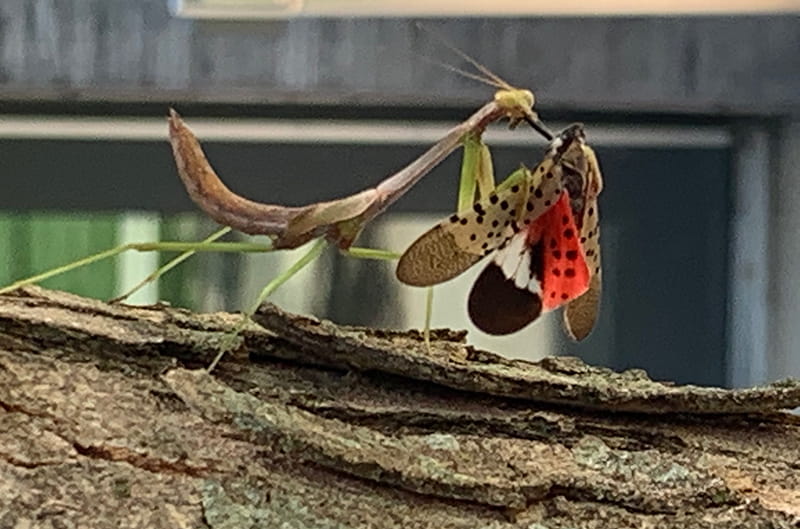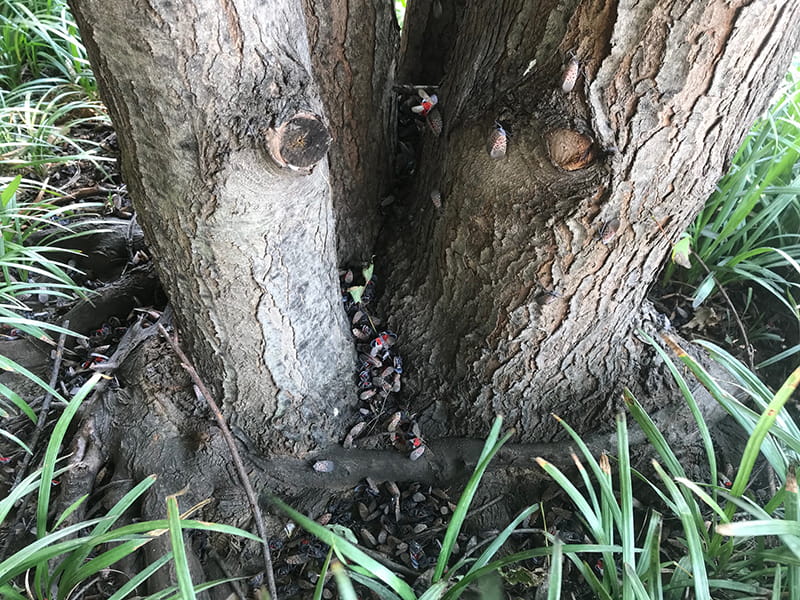Q&A: Protecting Trees From the Spotted Lanternfly

Most of you have seen the spotted lanternfly by now and many of you may have some of the same questions. Drexel University Director of Grounds Management Scott Dunham is here to provide answers you’ve been looking for. Read the Q&A below to learn how you can help protect the trees in your area (that is, if you’re in Pennsylvania, Delaware, Maryland, New Jersey, New York or Virginia), what is being done to the trees on Drexel’s campuses and more — and do not hesitate to reach out to Facilities if there are further questions or concerns.
Q: Is the spotted lanternfly (SLF) dangerous?
A: No. Although they can be alarming in their numbers and annoying when sitting outside, the SLF is not harmful to humans or pets.
Q: What harm can the SLF cause to trees or shrubs?
A: The SLF has been in the Commonwealth of Pennsylvania for almost seven years and has been damaging to economic crops — grapevines, maple and birch trees — but it is not an absolute that the trees they feed on will die. Weak or previously damaged trees may succumb to large volumes of the SLF feeding; however, most trees will survive. The most visible impact will be the production of “honey dew” by the SLF as they feed. This sticky sap can attract bees and other insects and drip onto what lies beneath, making some outdoor spaces less enjoyable.
Q: What is Drexel doing to safeguard trees on campus?
A: It is far too expensive to treat all trees on campus (we have over 1,000) and even if we did, we would not have a safeguard against un-treated trees in areas adjacent to campus. Instead, we have focused on trees near outdoor seating areas, to keep the nuisance pest at bay where people will be seated outdoors.

Q: What do you mean by ‘treat trees?’
A: Last year the Grounds Dept. observed the SLF feeding almost exclusively on red maples. This year while in the adult stage, ie. now, we hired a tree care contractor to apply a systemic insecticide to the trunks of red maples near seating areas. This will kill the adults as they attempt to feed and should help to keep populations down in populated areas.
Q: Why are you not wrapping tree trunks with sticky tape? That seems to work in catching adults.
A: This is true and the sticky tape can be an effective method at trapping adults. Again, the cost to wrap even half of our trees makes this a poor option; however, this is something that anyone can do at home on their own. The sticky tape can also trap desirable insects some of which are actively hunting the SLF.
Q: What can people do to help?
A: Kill every bug you see! Use your hand, a rolled-up newspaper or even your shoe and squash every single one you come across. Many will be out of reach or gathered in large numbers but feel free to swat them when you see them. You can also read up on updates and additional information from the PA Dept. of Agriculture website.
Q: Where did spotted lanternflies come from?
A: It is believed they came from Asia on a container ship and were first spotted in Pennsylvania back in 2014.
Q: Are there any other sources of information I can seek out?
A: The Academy of Natural Sciences has published several blog posts, including one about the return of the SLF from earlier this summer and an interview with a Drexel biology teaching assistant from 2018, and is involved in some research to help track their spread.
In This Article
Drexel News is produced by
University Marketing and Communications.

